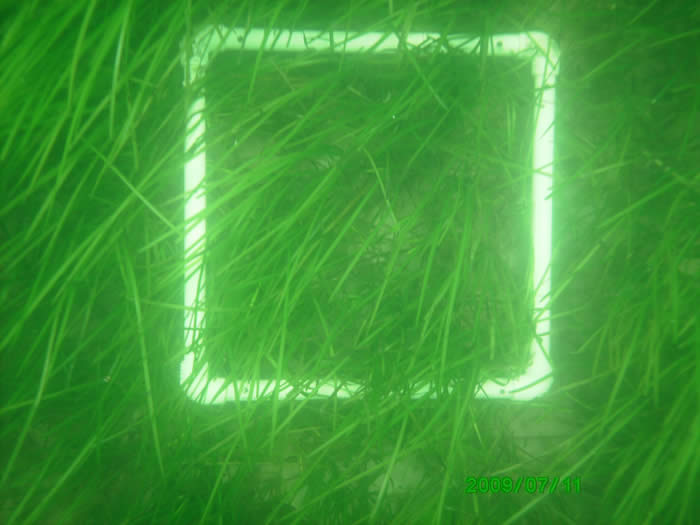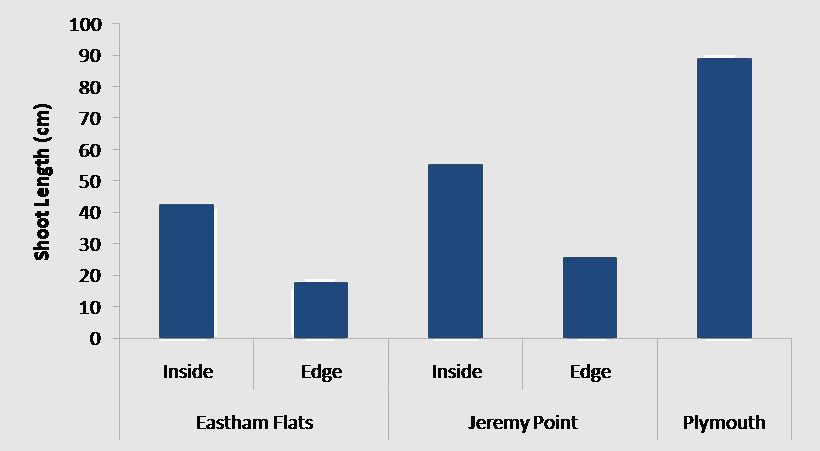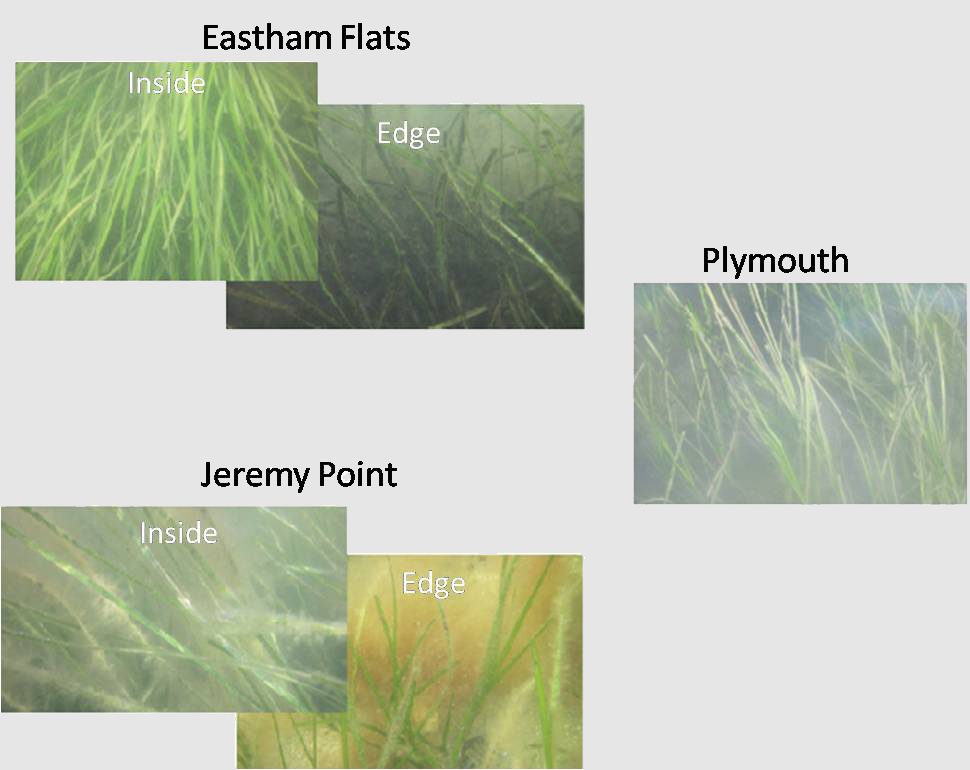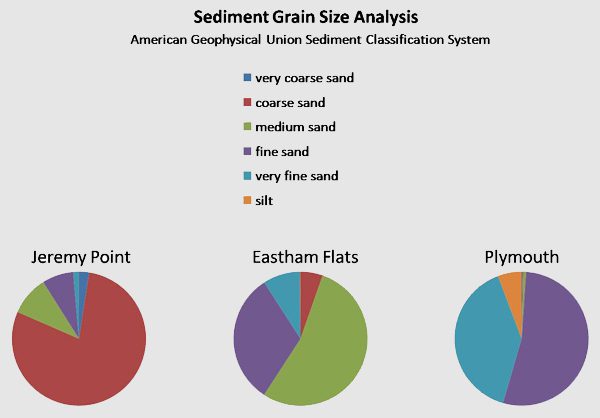Habitat Studies

Shoot Density
A 0.25 x 0.25 m quadrat was used to estimate shoot density. At all sites, shoot density increase during the growing season.

Shoot Length
Shoot length varied significantly among sites. Shoot length was greatest at the eelgrass site in Plymouth. At the sites on the Eastham Flats and Jeremy Point, shoots along the edge were on average half the length of those collected from the inside of the beds.

Epiphytic Load
Organisms that settle and grow on eelgrass blades are called epiphytes. Epiphytes of eelgrasses include algae, bacteria, fungi, sponges, bryozoans, tunicates, protozoa, hydroids, crustaceans and mollusks. Epiphytes provide food for many marine organisms. However, if epiphytic growth becomes too dense on eelgrass blades, it negatively affects the eelgrass by shading and competition for nutrients.
Blades from each site (inside the eelgrass bed and along the edge) were collected, length and width of each blade were measured to calculate surface area, and the epiphytes were scraped off of the blades. These epiphytes were dried for 24 hours at 60oC and weighed. Epiphytic load was calculated by dividing the dry weight by the surface area of the blades.
At each site, the epiphytic community differed in both the biomass and the species composition. At the eelgrass bed on the Eastham Flats, the epiphytic load was much greater along the edges of the bed. At the Jeremy Point eelgrass bed, eelgrass blades along the edges had less epiphytic growth than the blades inside the bed. The Plymouth site had less epiphytic growth on average than the other two sites.


Sediment Analysis
Sediment samples were collected from the surface by grab sampling. Each sample was rinsed with DI water, dried for 24 hours at 60oC , and weighed. Samples were then sorted with a sediment shaker using sieves with mesh sizes ranging from 0.053 to 2.0 mm. The sediment retained in each sieve was weighed to determine the percent composition of each sediment sample by grain size.
Grain size was finest at Plymouth with sediments mostly < 0.25 mm and coarsest at Jeremy Point with the majority of sediments ranging between 1.0 – 0.5 mm. At the Eastham Flats eelgrass bed most sediments were medium grain size, ranging between 0.25 – 0.5 mm.


Our Work
Humpback Whale Research
Right Whale Research
Marine Animal Entanglement Response
Marine Geology Department
Water Quality Monitoring Program
Marine Fisheries Research
Seal Research
Shark Research
Marine Education
Interdisciplinary
Marine Debris and Plastics Program
Marine Policy Initiative
Cape Cod Climate Change Collaborative
Publications

